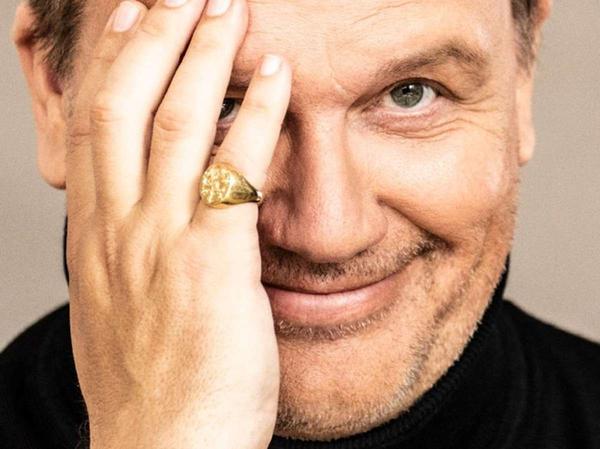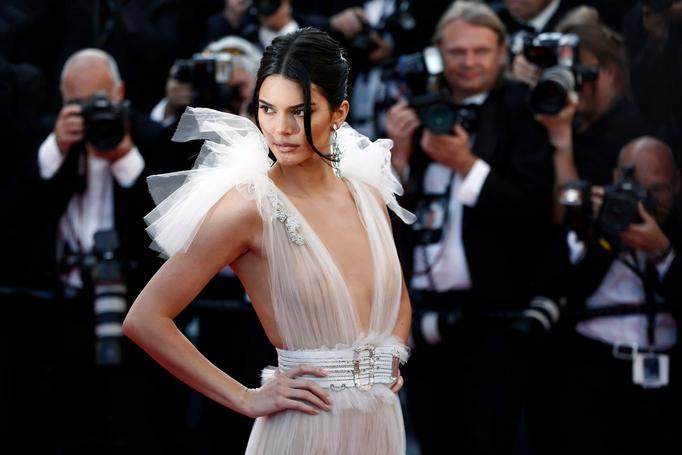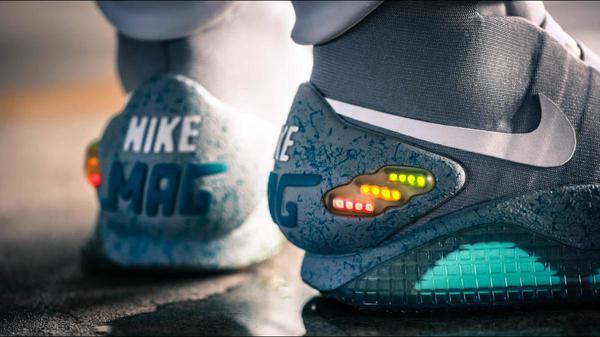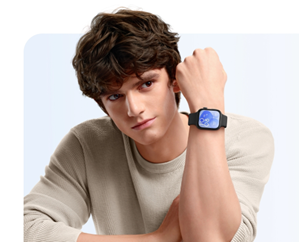
The 70s-anti-war backpack
Milan fashion week, 1979. In dark officer jackets with golden buttons and embroidered shoulder flaps, Gianni Versaces Models strut over the floor.In this way, the Italian designer gets a trend from the street onto the catwalk.And also demonstrates his political attitude.Versace is a pacifist, it takes its function and makes it mere ornaments.
Admittedly, he was not the first.Military boots, parka, camouflage pants, in beige, olive green or camouflage, were counter symbols to state militarism in the 70s.The Military Look in the United States in the late 1960s was created in response to the Vietnam War.Wearing military clothing meant: I am opponents of the war.
The backpack was also part of the opposition outfit: huge, worn Bundeswehr backpacks, on which people were scribbled, the camouflage spots painted with bright colors and military badge.This is how the purpose of clothing is caricatured: the camouflage.
"The youngsters were concerned with demonstrating an attitude," says Carlo Michael Sommer, trend researcher at the Darmstadt University of Applied Sciences, "the backpacks were not practical and convenient".Everything was stuffed into the military backpack, actually a cylindrical linen sack, without an upholstery on back or straps.Trend researchers Sommer also wore one of these monsters in the 1970s.For him that was a symbol of freedom, he recalls."I thought I could run away at any time, tour through Europe or Africa." The possession should be so little that you could carry it around with you at any time.
The military look fit into the zeitgeist.Feminism debate, oil crisis, environmental problems, RAF terror-the 1970s were a decade of the protest, not only in fashion.
The 80s - colorful, shrill, individual
Ecos, punks, suit wearers, outdoor freaks.Not like that in the 1970s - that combined fashion of the 80s."You were bored with the one -sidedness of the hippietum and wanted to turn away," says trend researcher Sommer.Differentiate yourself - and do not carry the same on your back.
Punks decided against the backpack anyway.They dragged bags or bags of plastic, torn and torn, into neon colors.The main thing was that the main thing was colorful, shrill and individually.Pendants of the eco -movement demanded “jute instead of plastic” and transported their belongings in fabric bags.
Jane Fonda hopped through aerobic videos in bright gymnastics bodysuits and triggered a fitness madness that had never been there before.So the backpack also had to be sporty, light and flexible.Just like the black nylon sports bag, which Jennifer Beals thrashes into "Flashdance" casually before she goes to dance.
Functionality was in the foreground, the backpack had to sit perfectly on the back and be comfortable.You should be able to ride a bike with him, go jogging, hike - and skate."In the mid -80s, trend sports seeped through to Germany," says Sommer."Athletes were primarily concerned with having their hands free."
New, waterproof materials came onto the market, the Jack Wolfskin brand conquered German outdoor shops.Backpacks that were worn in large cities were suitable for pole expeditions.Acceptance for them was still limited.In the subway and S-Bahn, you got a backpack in the face or in the stomach, arguments were inevitable- the trend researcher also remembered this well."You were not used to wearing backpacks yet."
The 90s - the main thing is Eastpak
This was made up for in the 1990s at the latest.The backpack was everywhere: on bike paths, in buses, in offices and on schoolyards.He became a fashion article.In addition to belly-free synthetics, platforms from Buffalo, Tamagotchis and the Diddl mouse, an accessory was in no way missing in the 1990s: the Eastpak backpack.In dark blue, beige, wine red, khaki and many other colors.
V elementary school students begged their parents to be able to exchange the butterfly or flight dinosaur school patches for an Eastpak, at the schoolyards of high schools he became a uniform- a backpack made of synthetic fiber with a large compartment and a small front.The carrier and the back were slightly padded, but it was still not comfortable.Because hardly anyone wore him on his back.He dangled somewhere on the butt, because the wearers were widened.If you wanted to settle off the crowd, paint the Eastpak with Edding, have the best friends signed on it or dangle a fabric cuddly toy on the zipper.
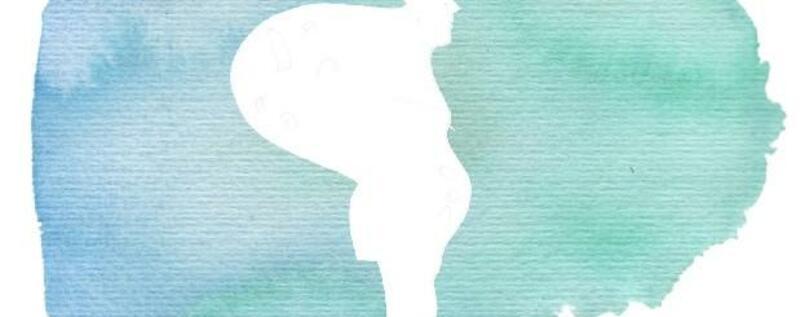
The company, which formerly called Eastern Canvas Products, produced bags and backpacks for the US military.It was only when Marc Goldman, the son of the brand founder, took over the company that products were produced for the general public.The big run in Germany used the "Skeleton campaign" in 1994.In advertising you could see a human skeleton in the desert, buried half in the sand, only the Eastpak shone like new.The company's turnover in Germany rose from 200,000 to 57 million DM within one year.
"This year the Eastpak comes back," says Kathrin Svensson, stylist at the Outfittery online shop.The return to this era, which has been going on in pop music for a while, makes the fashion of the 90s socially acceptable again."Evening -free tops and platform shoes are back."
The 2000s - the main thing is
The internet, new technologies, after 2000 everything will be more fast -moved.On her blog "Modeopfer110", Berit Müller lists fashion trends after decades, from the 20s to the 90s.From the turn of the millennium is over."A lot is copied from the previous decades, trends do not last ten, but at most two years," says the graduate fashion designer.
It gets quiet around the backpack.As a fashion accessory or as an expression of political attitude, it has disappeared."Anyone who wore a backpack did so for practical reasons," says Müller.
The backpack returns to its beginnings.Towards the end of the 19th century, farmers or traders strapped the so -called back carrier or Kraxe - the metal frame is strongly reminiscent of a bag of sack - to transport their goods.
One that still wear backpack is about their most sacred possession.Like the "Coffee To Go", the lapto pack becomes the practical companion of the successful city.Others can be infected by the outdoor craze of the zero years.They wear waterproof trekking backpacks with countless small compartments for drinking bottles, pocket knives and compass, matching the multifunction jacket.
The first iPhone came on the market in 2007.How do you integrate the new device into the outfit?Best so that everyone can see it."The pants were often very narrow in the nineties, a cell phone didn't fit in," says trend researcher Michael Sommer.The solution was a bodybag, a small triangular bag that was attached across the chest with a Velcro fastener.The most important thing: an extra compartment for the cell phone was attached to the carrier at chest height.
Today - the big comeback
The backpack is the new handbag.First, designers such as Alexander Wang, Karl Lagerfeld or Vivienne Westwood presented him on the catwalks, but at the latest since fashion chains such as Topshop or Urban Outfitters have included him in the range, it is officially: After he has disappeared for a decade, the backpack celebrates its resurrection.
David Beckham roams with Ms. Victoria, stroller and bright-shaped backpack through Disneyland Paris, "Twilight" star Kristin Stewart ends up with a yellow model at Tokyo Airport.Ryan Gosling, Halle Berry, Hugh Jackman - the backpack trend has arrived in Hollywood.
"This has been predicted for two years," says Kathrin Svensson from Outfittery.Because when you saw more and more jute bags in large cities, it was clear that sooner or later jute bag carrier realizes that the bag is impractical.The typical Berliner, who rides to work by bike, breathes up: finally he can wear backpack again.
For example, one of the Herschel brand, named after the Canadian island on which the two inventors grew up.The backpack design is simple and practical, an extra compartment for the laptop and one for the sunglasses are installed.The most popular model, which looks like the Eastpak of the 90s, costs 54.99 euros and is called "Heritage".That means: This backpack has history.
Another model, twice as expensive, reminds a bit of old scout backpacks: the large cylindrical compartment is closed with a kind of belt system.The belts are not made of leather, but made of plastic, the rest of the backpack made of simple synthetic fiber.The Herschel backpacks are among the most popular pieces at Urban Outfitters in Berlin, confirms a seller.
Quality is apparently not in the foreground.The backpack must look good.Like the Fjällräven sick.The box-shaped backpack with the little fox in the emblem-Fjällräven sick is Swedish and means "Arctic fox"-was originally designed as satchel for children and quickly became a popular accessory for big city cyclists.
And also for women who actually only wear handbags, there are now suitable models, for example from the German model label MCM.The small black backpacks are occupied by rhinestones or rivets.Cost: around 600 euros.

